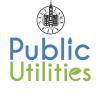Usability of medium-range forecasting for water system reliability
WWA Co-PI Court Strong is leading an effort that leverages existing research at the University of Utah to study the impacts of interconnected changes due to weather variability on water supply, demand, and water system reliability with the Salt Lake City Department of Public Utilities (SLCDPU). It builds on years of partnership working with the SLCDPU personnel to conduct impact assessments and develop adaptation measures. Working with SLCDPU, the real-world implications of projected conditions will increase understanding of water system performance in this understudied planning period. Strong and collaborators finalized a vulnerability assessment of Salt Lake City’s water systems and developed a stakeholder-motivated paper on multi-year controls on groundwater storage in seasonally snow-covered headwater catchments. In May 2023, Strong began work with WWA’s Imtiaz Rangwala and Seth Arens, and student Prasad Thota to develop a new online tool that will be used to inform seasonal precipitation forecasts for SLCDPU and hence operational water management.
Currently, a critical gap exists in analyzing water system reliability over a projected period of two to five years. The results will be informative for other surface water-driven systems in the Intermountain West. Leveraging the WWA network in Utah, we will introduce other water utilities along the Wasatch Front in Utah to this new understanding and capability.
